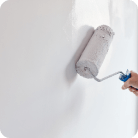How to Store Vinyl Records and Protect Your Collection Like a Pro

If you haven’t heard, vinyl is the hottest trend in music right now. For the first time since 1987, vinyl outsold CDs in 2022 (BBC News, March 13, 2023). But as interest in the medium grows and more and more new enthusiasts start spinnin’ platters, it’s important to know how to care for and store your LPs, whether they are first editions, re-issues or the newest releases.
"Just take those old records off the shelf, I’ll sit and listen to ‘em by myself”
—Bob Seger & The Silver Bullet Band, Old Time Rock and Roll
This guide outlines some of the dangers your record collection faces and how you can mitigate some of the risks involved in storing your records, both in the home or long-term such as in a storage unit. We’ve also included expert tips, so whether your collection is stored for months or years, it’ll look and sound as good as it did “Yesterday.”

Your Record Collection’s Three Enemies
“You mainly want to protect [your records] from heat and bugs, and direct sunlight,” says Steve Flesher, owner of Retro Records in Orlando, FL.
Your prized vinyl record collection deserves to be stored with care! Vinyl albums are very delicate and sensitive to temperature and humidity changes, so it’s crucial to protect your records, from Taylor Swift and Pearl Jam to The Cure, Stevie Nicks and more (if you didn’t know, these were the top-selling artists on Record Store Day in April, 2023).
Here are some of the worst things for your vinyl:
High Humidity
Storing records in a room or storage unit prone to high humidity can permanently damage an album collection. The delicacy of this medium produces the sound we all know and love, but it also makes vinyl very sensitive. Moisture from high humidity can attract bugs and pests that can ruin your albums. Humidity can also cause an LP to degrade faster, and cause the record to lose sound quality.
Temperature
Your record collection shouldn’t feel the temperature rising! Frequent and drastic changes in temperature can also cause your record collection to degrade faster. Changing temperatures may cause your vinyl to swell and contract, which can result in permanent damage. Show your records “Burning Love” by storing them in a safe place with a consistent temperature!
Light
Light is another common factor that can affect a record collection. Prolonged exposure to bright lights, sunlight or UV light can be damaging. Light may not be an issue if you are storing your vinyl in a storage unit, but if you are attempting to store your albums in a basement or attic near an open window, the light can be a threat to your collection.
How to Prevent Humidity, Temperature & Light Damage
Whether your turntable is front and center in your home or the bulk of your collection is just minutes away in a convenient storage unit, there are right ways and wrong ways to store vinyl.
In the case of storage units, look for climate-controlled storage options. These units are regulated, meaning the temperature of these units remains relatively constant throughout the year, mitigating damage from temperature fluctuations and humidity.
At home, make sure your records are out of direct sunlight, or someplace that gets too hot (like an attic, next to a radiator or space heater, or even electronics that draw a lot of power and give off heat). And while a house usually affords some measure of relief from humidity, keep your records away from places where humidity can build up, like near bathrooms, in basements or attics.
How to Store Vinyl Records in a Storage Unit
“Make sure that you stack [your records] properly,” Steve says.
Now that you have some tips about where to store, it’s just as vital to know how to store your records. While these tips are centered around storing your LPs in a storage unit, the concepts are just as valid for storing at home.
Step 1: Shelving Unit or Storage Cabinets
When it comes to storing your record collection, shelving units and storage cabinets are very helpful. These two pieces of furniture allow you to safely store your records off the ground.
If you decide to use shelves or a shelving unit, store your records within a storage box or container. If you choose a storage cabinet, simply place your records on the shelves—vertically—and organize them how you see fit.
Step 2: Cleaning Your Records
Before you put your records in storage, be sure to clean all of them. This step helps ensure your collection is protected from dust, dirt and other pollutants.
To clean your records, start by using a microfiber cloth or record cleaning brush to gently wipe off all dust and dirt particles. A record-cleaning brush will be more effective at removing dust from the grooves of a vinyl record.
After using a cloth or brush, gently wipe each album with a damp cloth. After wiping each LP, make sure to dry each completely before putting them in storage.

Step 3: Sleeves and Album Covers
Plastic sleeves are the best option in order to protect your records, Flesher says. Outer and inner sleeves can be purchased in bulk to protect the artwork on the album cover, as well as the LP itself, from bugs, static and unnecessary wear and tear. Check out these inner and outer sleeves from sleevecityusa.com.
Should vinyl be stored upright?
One of the best ways to store vinyl records is vertically. Storing records horizontally may place too much pressure on albums lower in the stack, causing damage and affecting the sound quality. If storing records at a slant, be sure to provide support backing to protect the back few albums from warping.
Final step: properly store collection
After preparing your records for storage, it’s time to organize! If you are using a shelving unit to store your records, you will need to purchase a few storage boxes to keep your vinyl protected. If you are using a storage cabinet, consider purchasing record organizers. When stacking your LPs vertically, be sure to support the last two or three albums with backing (like cardboard) to prevent any bending or warping “Under Pressure.”

Wrapping Up: Vinyl Record Collection Storage
“‘Fools’ said I, ‘You do not know | Silence like a cancer grows’” – Simon & Garfunkel, The Sound of Silence
Pretty sure Simon & Garfunkel weren’t singing about protecting your records, but it’s easy to imagine what life would be like without good music. Make sure you take care of your record collection now, so your tunes will be loud and proud for years to come.
Need storage for your records?
One of the best storage methods for vinyl records is a climate-controlled unit. If you’re looking for record storage solutions near you, find your nearest Store Space with our storage location finder.
An earlier version of this blog was written by Nicholas Sollitto and published on Feb. 17, 2022.






